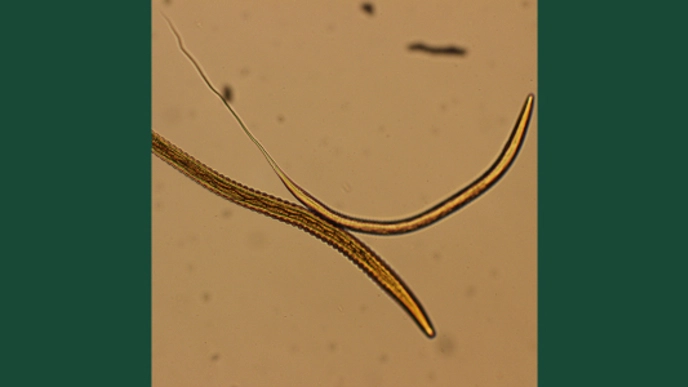
Ny klinisk diagnostik för migrerande blodmasklarver
Project overview
Participants
More related research
Short summary
Blodmasken stor strongyles, Strongylus vulgaris, anses vara den farligaste parasiten för hästar. En ökad förekomst av parasiten har observerats i Sverige och Danmark under de senaste åren, vilket är ett hot mot hästarnas hälsa.
The large bloodworm, Strongylus vulgaris, is an intestinal parasite that can cause colic in horses. Horses ingest bloodworm larvae when they graze. In the gut, the larvae develop into a new larval stage and move to the blood vessels supplying the gut, causing vascular damage that can eventually lead to intestinal infarcts causing oxygen deprivation with subsequent colic and peritonitis.
Diagnostics and treatment
Despite the increase in bloodworm infections, regular treatment with deworming agents is not a sustainable solution. Several other parasites in horses have developed resistance to dewormers and restrictive use is necessary to maintain their effectiveness.
Today, infections are not diagnosed until the parasite has completed its life cycle and eggs can be detected in the feces, which occurs up to seven months after the horse is first infected. By then, the horse is already exposed to the dangerous stage when the larvae are in the crop root (the place where the intestinal blood vessels supply the intestines with blood). If instead blood tests could detect infections already when the larvae move from the intestines to the blood vessels, the chances of timely treatment would be greater.
Aim
The aim of this project is to validate new blood test markers for infection by the large bloodworm already in the dangerous migratory phase.
Collaborations
The project is a Danish-Swedish collaboration between parasitologists and veterinarians. The study will be conducted at four equine clinics in Sweden:
- The University Animal Hospital at SLU in Uppsala
- Evidensia in Helsingborg
- Evidensia in Strömsholm
- Mälarens hästklinik.
In addition to the researchers from SLU, the following person is also an important part of the research group:
- Tina Hollberg Phil, University of Copenhagen